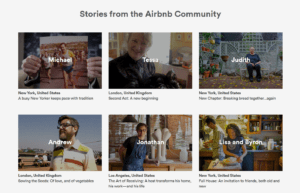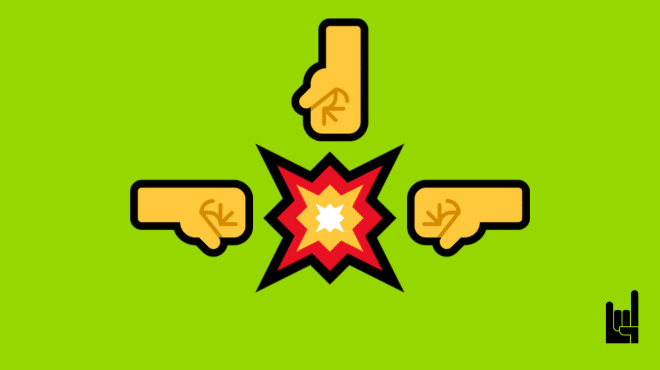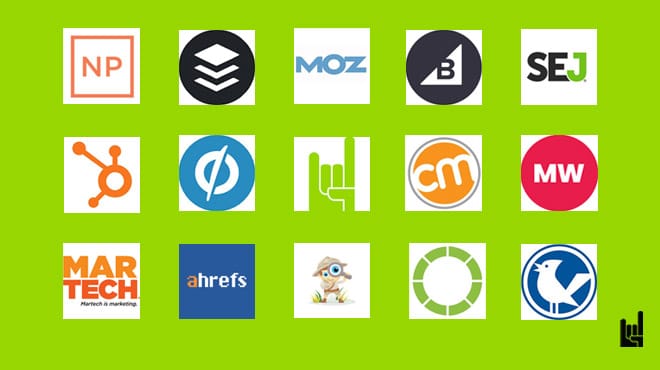A brand is first and foremost a business. But not all businesses are brands.
When you read the names of the above-mentioned brands though, it’s not only the goods they produce that came into your mind. Go ahead, think for a few seconds about a brand you like. What thoughts and emotions do you think and feel?
The key ingredient that transforms a business into a brand is this: storytelling.
What is Brand Storytelling?
Brand storytelling is “using a narrative to connect your brand to customers, with a focus on linking what you stand for to the values you share with your customers.”
Storytelling convinces your audience that you are not just selling your product or service. You are selling a lifestyle, a philosophy – you are selling a story. Your product is only part of your story.
Brand storytelling is what can differentiate your brand from the competition. Brand storytelling creates emotions that build intimacy and affiliation with your brand.
It’s what will help connect your business with your customers.
Brand Storytelling & The Audience
People love stories. They love telling them as much as they like hearing them: from the ancient tribes gathered around the campfire to a company of friends gathered around a monitor. Let us not forget the arts and what they all have in common: the story. Each form of art is only the medium that delivers the story.
Like in every story, there is the main character, called the protagonist.
The protagonist is at the center of the story, the one that makes all the key decisions. The audience wonders what the protagonist’s next move will be, empathize with their struggle, and, inevitably, with their success or loss.
Your business is the protagonist and your clients are the audience. You are the storyteller – the one who delivers a good story.
You have to relate to your audience and in order to do that, you have to identify your audience first.
To whom are you telling the story? What is their age and what are their desires? What do they want to see and hear from you?

The more you know about your audience, the more relevant your content will be. You should take into consideration your target audience, without alienating your potential one.
Creating the right content for the right people is a two-way interaction. What is odd, yet interesting with this kind of interaction, is that your audience and your content will co-transform: your audience will build in line with your content while your content will shape according to your audience.
How Can You Do Brand Storytelling?
Background stories make your business look more transparent, it humanizes your business and gives your audience the chance to know you better. These are some stories that require 0 strategy on your part to expand upon:
A Story about your business’ birth
You don’t have to be Twinings tea, a brand that your great-great-great-great-great-(at this point I’m improvising)-grandfather could be enjoying as much as you do now. If you have a long history or tradition, that’s great – history is fascinating to almost everyone. You are going to have a lot of material to go through and process, and share with your audience.
Are you a new company, or a startup even? That’s fine! You are history in the makings. Tell your audience what you are about: Why did you choose this kind of business, how did everything start; the reason your company came to be. Share info and numbers that look interesting and communicate your status and values.
A Story about your business today
Give your audience an inside look at your company. What does it really look like? How does your business’ building look like from the outside? What do you see from your window? What’s inside? The rooms, the desks, the chairs – where the magic happens. What tools and software do you use? Does your product’s development have anything interesting to offer?

A Story about the faces behind your business
The human element. You and everyone working for the company.
How many people are required from point A, being the birth of an idea, to point Z, being the audience buying your service or product?
What is each of them doing and how do they contribute to the completion of the goods you produce? What motivates you and your team to go to work each day?
Spores, an NFT marketplace, does this strategically by incorporating the founding and the advisory team members right on the homepage. It introduces the members by having their own pictures with their names and titles below. What’s more, each image flips into credentials (bottom left).

A Story about one of your products/services
Ok, this is not Psychology Today’s blog, but I want to share a truth: All parents have a favorite child. If you didn’t know, I hate to break it to you. (That doesn’t mean they don’t love you!).
In all seriousness, if you make/distribute/sell more than one product, chances are one of these is your favorite.
What makes it so special? It could be a product that’s not selling too well, but you still have a special place for it. Maybe it was the first item your company ever sold or the one you find the most useful yourself.
A Story about your clients
Case studies and success stories let you showcase your customers’ experience with the business. An authentic testimonial piques interest and drives leads. Give your reader context and write few words about what the project or product is all about.
Don’t get too technical. Numbers and how-to steps are fine as long as they are not your main focus. If you increase your clients’ sales by 50%, go ahead and mention it, but it’s equally as important to share a unique angle you took or an interesting insight you can share.
Brand Storytelling – 3 Case Studies
Let’s jump straight to 3 examples from 3 completely different industries. How did brand storytelling help their business connect with customers?
Airbnb
Airbnb knows how to build brand awareness.
In Airbnb’s case, the brand doesn’t sell anything that belongs to them. The service, in their case, is the customer – both hosts and guests. Airbnb built exactly on that. Instead of telling the brand’s story, they placed their customers at the center of the brand, urged them to tell their story, and made them the brand. Then, Airbnb dedicated a whole section featuring stories from the community, from all over the world.

The stories are likable and engaging regardless of your need to use Airbnb’s services. But they will make you want to use them.
Naturally, they share their stories through many mediums but their favorite one is by far the video format and Youtube being their channel of choice. Having almost 100k subscribers and more than 100M total views, they share places, people and what they stand for across the globe: Belong Anywhere.
Spotify
The streaming on-demand media company realized at a point where it was well-established, that it has a lot of customer data at its disposal. Data from millions of users.
Spotify gathered the music choices of its users, their location data, and demographics, and combined them to create the Spotify Insight Blog.
The blog releases insight such as ‘How music taste predicts movie taste’ or ‘Which emojis are used to describe which artist or genre’.

In 2017, Spotify created an interactive site called ‘How Students Listen 2017’, using data to create an interactive microsite, examining how different colleges and universities in the U.S. listen to music. It provided insight such as genre popularity, track duration & tempo i.e.

Spotify gave their customers a sense of connectivity with others as well as a sense of ownership over their music tastes.
Using internal data this way helped brands like Spotify to create original stories based on insights that only they can access.
Another Spotify’s remarkable original story: Musical Map of the World.
Dove
Dove’s mission didn’t look easy even on a piece of paper: Redefine what real beauty is.
Dove is not selling dresses, ties, jewelry, or anything that enhances the beauty of a human. They are selling soap. There is nothing fancy about soap.
But that didn’t stop them.
In the mid-’00s, during the dawn of Youtube, they launched the ‘Dove Campaign for Real Beauty’. I can’t remember how I bumped into it for the first time but what matters is that me, someone who doesn’t really care about soap brands, was somehow watching this video: The video had gone viral – what at the time was just known as ‘popular’.
Their story made a quite an impact. They said something that nowadays looks like commonplace: Beauty standards are fake – Everyone is beautiful.
It is commonplace today because this story like similar others fulfilled their brand storytelling purpose: Engage with the audience.
Since then, Dove has launched similar campaigns. This one taps into the far-too-common emotion of insecurity, beauty standards and how we perceive ourselves.
Now hold back those tears and go tell a story yourself!

I write for GrowthRocks, one of the top growth hacking agencies. For some mysterious reason, I write on the internet yet I’m not a vegan, I don’t do yoga and I don’t drink smoothies.




4 Responses
Awesome post! Well done Nic! ????
Hey Katrin, thank you!
Absolutely helpful, Nic, thank you so much.
Cheers!